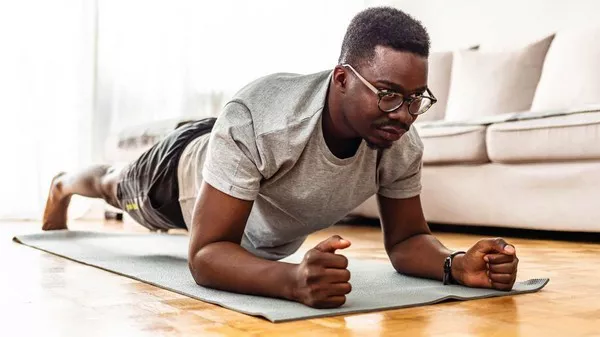Upper body workouts are not just for bodybuilders or fitness fanatics. They are a critical component of a balanced fitness regimen and essential for improving functional strength, posture, coordination, and even self-confidence. From pushing a shopping cart to lifting a suitcase overhead, the upper body muscles—such as the chest, shoulders, back, arms, and core—are involved in almost every daily activity. Training them consistently enhances quality of life and prevents injuries, especially as you age.
A strong upper body does more than contribute to appearance. It builds the foundation for efficient movement in sports and recreational activities. Whether you’re playing basketball, swimming, doing yoga, or simply carrying groceries up the stairs, upper body strength allows you to perform with better control and endurance. Neglecting these muscles can lead to imbalances that affect your entire kinetic chain, leading to chronic pain or limited mobility. By training your upper body, you not only develop physical resilience but also improve overall body mechanics.
What Muscles Are Involved in an Upper Body Workout?
The upper body consists of several major muscle groups, each serving unique and essential functions. The pectorals, or chest muscles, enable pushing movements and support the arms and shoulders. The deltoids, or shoulder muscles, are involved in lifting and rotating the arms. The biceps and triceps are responsible for elbow flexion and extension, allowing you to bend and straighten your arms effectively. The trapezius and latissimus dorsi—muscles in the upper and mid-back—help with pulling, posture, and stabilizing the shoulder blades.
Equally important is the core, which includes the abdominal and lower back muscles. While technically not exclusive to the upper body, the core acts as a stabilizing center for almost every upper body movement. When you do a push-up or overhead press, your core keeps you balanced and aligned. This coordination between muscle groups means that an effective upper body workout must not only target isolated muscles but also incorporate compound movements that engage multiple areas simultaneously.
What Types of Exercises Build Upper Body Strength?
Upper body workouts can include a variety of exercises that fall into several categories. Compound movements like push-ups, pull-ups, and overhead presses engage multiple joints and muscle groups at once, making them highly efficient for strength and functional fitness. Isolation exercises such as bicep curls or tricep extensions target specific muscles for growth and definition. Both types have their place and can be tailored to different goals, whether it’s building mass, toning, or increasing endurance.
Bodyweight exercises are an excellent place to start, especially for beginners or those without access to gym equipment. Push-ups, dips, planks, and inverted rows all use your body’s resistance to build strength and stability. As you progress, incorporating free weights like dumbbells, kettlebells, or resistance bands allows for added load and variety. Machines can also be useful for controlled movement, especially for those recovering from injury or new to lifting. The key is to ensure proper form, balanced volume, and gradual progression to avoid overtraining or imbalance.
How Should You Structure an Upper Body Workout?
A well-structured upper body workout typically includes pushing, pulling, and stabilizing movements. This ensures balanced muscle development and reduces the risk of overworking a particular area. For example, a workout might begin with a compound push movement like bench presses, followed by a pulling exercise like bent-over rows, and then incorporate accessory movements such as lateral raises or bicep curls. Core work can be added toward the end to round out the session.
Each workout should start with a dynamic warm-up to increase blood flow and prepare the joints. Arm circles, shoulder shrugs, band pull-aparts, and light resistance movements are effective warm-up techniques. During the workout, aim for 3 to 4 sets of each exercise, with 8 to 12 repetitions depending on your goals. Heavier weights and lower reps promote strength, while lighter weights and higher reps improve endurance and tone. Finish with a cool-down including static stretches for the shoulders, arms, and upper back to aid recovery and flexibility.
Can Upper Body Workouts Improve Posture and Mobility?
One of the most underrated benefits of upper body workouts is their positive impact on posture. Many people suffer from rounded shoulders, tight chest muscles, and weak upper backs due to prolonged sitting and poor ergonomics. Strengthening the muscles that support the spine—especially the trapezius, rhomboids, and rear deltoids—can help reverse these patterns. As posture improves, so does breathing, confidence, and spinal alignment.
Mobility is also enhanced through a well-designed upper body routine. Exercises that require a full range of motion, such as overhead presses or arm circles, keep the shoulder joints healthy and fluid. Including resistance band exercises or yoga-inspired movements helps maintain joint integrity and flexibility. Stretching the chest, shoulders, and lats regularly prevents tightness that can limit your ability to perform other exercises correctly. In this way, upper body training is not only about strength—it’s about moving better and living better.
How Often Should You Train the Upper Body?
Frequency depends on your fitness level, recovery ability, and overall training program. Beginners might start with two upper body workouts per week, allowing 48 to 72 hours for recovery between sessions. More advanced lifters may train different muscle groups on split routines, such as chest and triceps one day and back and biceps another. This allows for more volume and intensity while still giving individual muscles adequate time to recover and grow.
Full-body training programs can also incorporate upper body work two to three times per week. The important thing is to avoid overtraining, especially with smaller muscle groups like the biceps and triceps. If these muscles are fatigued from a prior session, they won’t perform well in compound lifts like pull-ups or bench presses. Listen to your body, rotate exercises to avoid plateaus, and adjust rest days as needed. Consistency over time yields better results than intensity alone.
What Equipment Is Useful for Upper Body Training?
You don’t need an expensive gym membership to get an effective upper body workout. With just your bodyweight, you can do push-ups, dips, and planks that challenge your muscles. Adding a pull-up bar at home opens up another level of intensity. Resistance bands are excellent for both beginners and experienced athletes because they offer scalable resistance and allow for fluid, joint-friendly movements.
Dumbbells are perhaps the most versatile free weights for upper body training. They allow a full range of motion and can be used for everything from shoulder presses to rows and curls. Kettlebells offer unique benefits by challenging balance and coordination during dynamic movements. For those in a gym, machines can provide support and help isolate specific muscles, which is especially useful during rehab or for precise body sculpting. The right tools depend on your goals, space, and experience, but effective upper body training is possible in nearly any environment.
How Can You Stay Motivated to Train Your Upper Body?
Motivation often stems from seeing and feeling progress. Setting short-term and long-term goals can provide a sense of direction and purpose. For example, aiming to do your first full push-up or increase your shoulder press weight by five pounds gives you a tangible target. Tracking your workouts in a journal or app can help visualize improvement and hold you accountable.
Variety is another key to staying engaged. Change your routine every few weeks by rotating exercises, adjusting rest times, or using different equipment. Incorporate circuit training, supersets, or timed intervals to make workouts more dynamic. Training with a partner or joining a class can also inject fun and social interaction into your routine. Most importantly, celebrate small victories. Feeling stronger, moving better, or standing taller are all signs that your upper body training is paying off.
What Role Do Nutrition and Recovery Play?
Muscle growth and strength gains from upper body workouts don’t happen in the gym—they happen during recovery. This makes nutrition and rest just as important as the workout itself. Consuming enough protein is essential for muscle repair. Lean meats, eggs, dairy, tofu, legumes, and protein supplements can all support this process. Carbohydrates provide energy for training and recovery, while healthy fats aid hormone function.
Sleep is another critical component. During deep sleep, the body releases growth hormone, which supports tissue repair and recovery. Aim for 7 to 9 hours of quality sleep per night. Active recovery days involving light stretching, walking, or yoga can also reduce soreness and enhance circulation. Hydration is often overlooked but vital, especially since muscles function best when fluid levels are optimal. Combining proper rest, hydration, and nutrition accelerates recovery, allowing you to train consistently and progress safely.
What Is the Long-Term Value of Upper Body Training?
Upper body training offers far more than just aesthetic benefits. Over time, it contributes to long-lasting physical health, improved mobility, and increased confidence. As you age, muscle mass naturally declines—a process called sarcopenia. Regular resistance training, especially for the upper body, slows this decline and maintains functional independence. You’re less likely to suffer from falls, shoulder injuries, or joint pain if your muscles and connective tissues are strong and resilient.
The psychological benefits are also powerful. Mastering a new movement, seeing muscle tone in the mirror, or simply carrying heavy bags with ease can boost self-esteem and mental well-being. The discipline, focus, and consistency required in upper body training translate into other areas of life, from work productivity to personal relationships. When integrated into a holistic lifestyle, upper body workouts become a tool for not just physical transformation, but personal growth.
What’s the Final Word on Effective Upper Body Workouts?
An effective upper body workout is about more than lifting weights or chasing aesthetic goals. It’s about building a balanced, capable body that supports your lifestyle and future health. By training key muscle groups with the right mix of compound and isolation exercises, using smart progression, and incorporating rest and nutrition, you can achieve significant and lasting results.
The journey starts with understanding your body and honoring its needs. It continues with consistent effort, curiosity, and adaptation. Whether you’re aiming to gain strength, improve posture, boost endurance, or simply feel better in your own skin, upper body training offers a rewarding path. With every push, pull, and press, you’re investing in a stronger, healthier version of yourself. So the next time you face the decision to skip or commit, ask yourself: what’s stopping you from becoming your strongest self?
Related Topics






























